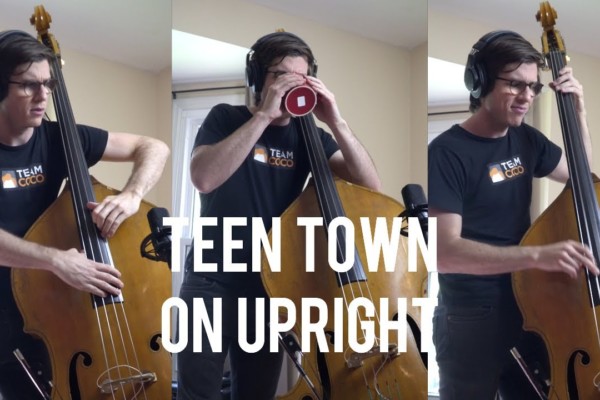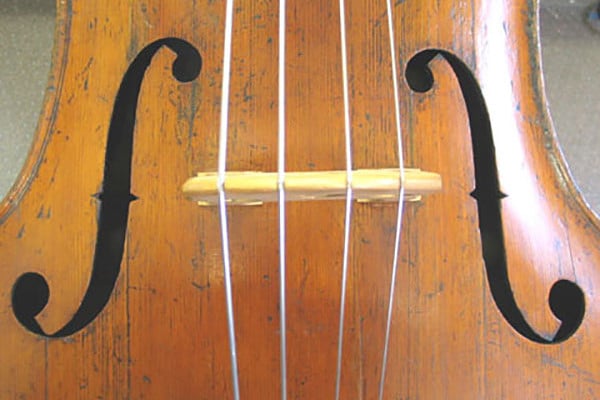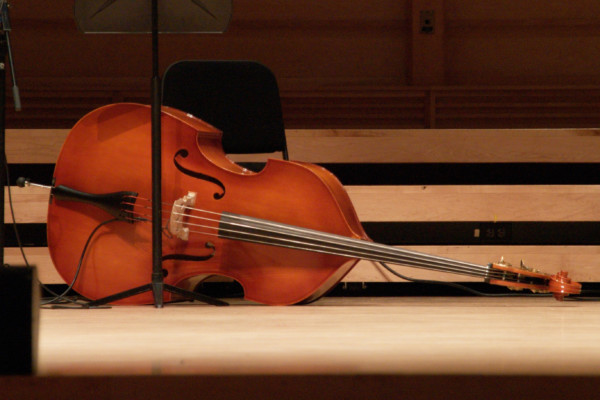Holding the Upright Bass
There are a plethora of ideas on how one should hold the double bass and new variants seem to surface every day. Some stance decisions will be made based on specific performance situations, but most will reflect someone’s pedagogical background (i.e. who their teachers were) and personal preference. For example, it is unlikely you will sit on a stool while playing in a Psychobilly band, but if do sit on a stool (hopefully at a different gig) you may prefer a higher or lower stool and hold the instrument either fairly vertical or more horizontal.
Being able to play well both standing and seated is a worthwhile goal, even if you prefer one over the other. If you become a professional, or play in a variety of groups, it is likely you will need to do both at various points in your career.
Sitting
Variants and Reasoning
There are a number of stances prevalent with bassists who play seated. Some use bar-sized stools, while others use shorter stools (even if the player is of average or above-average height.) Some keep the bass low, while others lengthen their endpin significantly. Some keep a relatively vertical position and approach the instrument from the side, while others have a more backward slanted position and hold the instrument more like a cellist holds their instrument. Some keep both feet at the same level while others place their left foot on a higher rung than their right foot.
Sometimes these preferences indicate an acute awareness of one’s body and an adaptation of stance to suit their specific physical traits. Oftentimes, however, it is simply a reflection of the tradition, or “school,” their primary teacher subscribed too. It should be noted that the latter situation does not necessarily present any absolute barriers to achieving virtuosity.
There are a variety of non-musical reasons a person might sit while playing the double bass. For example, they may play long gigs, have physical limitations or play in an orchestra that demands conformity. Most people sit, however, because they prefer it from a technique standpoint.
A person who prefers to play seated might do so because they believe that sitting:
- Provides better access to the mid and upper positions
- Allows for a single position of the bass for all positions of the left hand
- Presents fewer obstacles to holding the instrument in an economical way
- Allows for greater stability of the instrument
- Facilitates the use of arm weight in the bow
- Presents fewer stressors on one’s back and shoulders
- Allows for equal weight on the string from the right arm/bow.
Standing
Variants and Reasoning
Some people may stand because they believe it is more appropriate for a specific musical situation or simply because they don’t want to haul around a stool. Most people, however, stand because they prefer playing in this manner. Some people use a straight endpin, while others use a bent or angled endpin (a lá Rabbath/Tortellier/Rostropovich). Among those who use an angled pin there are any number of different angles in use. Some prefer the instrument to fall into their left hand a bit, while others prefer the instrument fall primarily into their body. Among those who use a straight pin there are those who hold the instrument nearly vertical most of the time, and those who have two or even three different stances, based on the area of the bass their left hand is in. Some prefer the instrument to be very high, while others prefer the bottom of the instrument to be low to the ground. There is even one school of thought that advocates putting all of one’s weight on their right leg, straightening their left leg, raising their left toes (so that only the heels touches the ground) and resting the bottom bass against their left foot. I wouldn’t advise this last one.
A person who plays while standing might prefer to do so because they believe that standing:
- Allows for greater freedom of motion for their entire body
- Allows for the most flexible sense of control over the instrument
- Allows them to reach all areas of the instrument with greater ease
- Gives them greater control over the bow (especially true of angled pin users)
- Allows for greater acoustic sound projection
- Gives them better control of instrument
Whatever the specifics of your stance, there are several key issues you will need to deal with. If you deal with them well, your stance will work for you and not against you.
- Keep the weight of the bass off of the left hand thumb
- Allow your right arm/bow to reach all the strings with ease
- Ensure your right hand/bow placement falls in the desired place without putting your shoulders on two different planes
- Keep your hips at the same level
- Keep your joints moveable and free
- Don’t strain your back, neck or shoulders and keep them loose
- Use gravity instead of muscle whenever possible
- Don’t be afraid to experiment and fine tune your stance to achieve the goals of freedom of motion and economy of effort. Sometimes the problem is you. Sometimes it is your stance.
- Always move with ease
Dr. Donovan Stokes is on the faculty of Shenandoah University-Conservatory. Visit him online at www.donovanstokes.com and check out the Bass Coalition at www.basscoalition.com.



